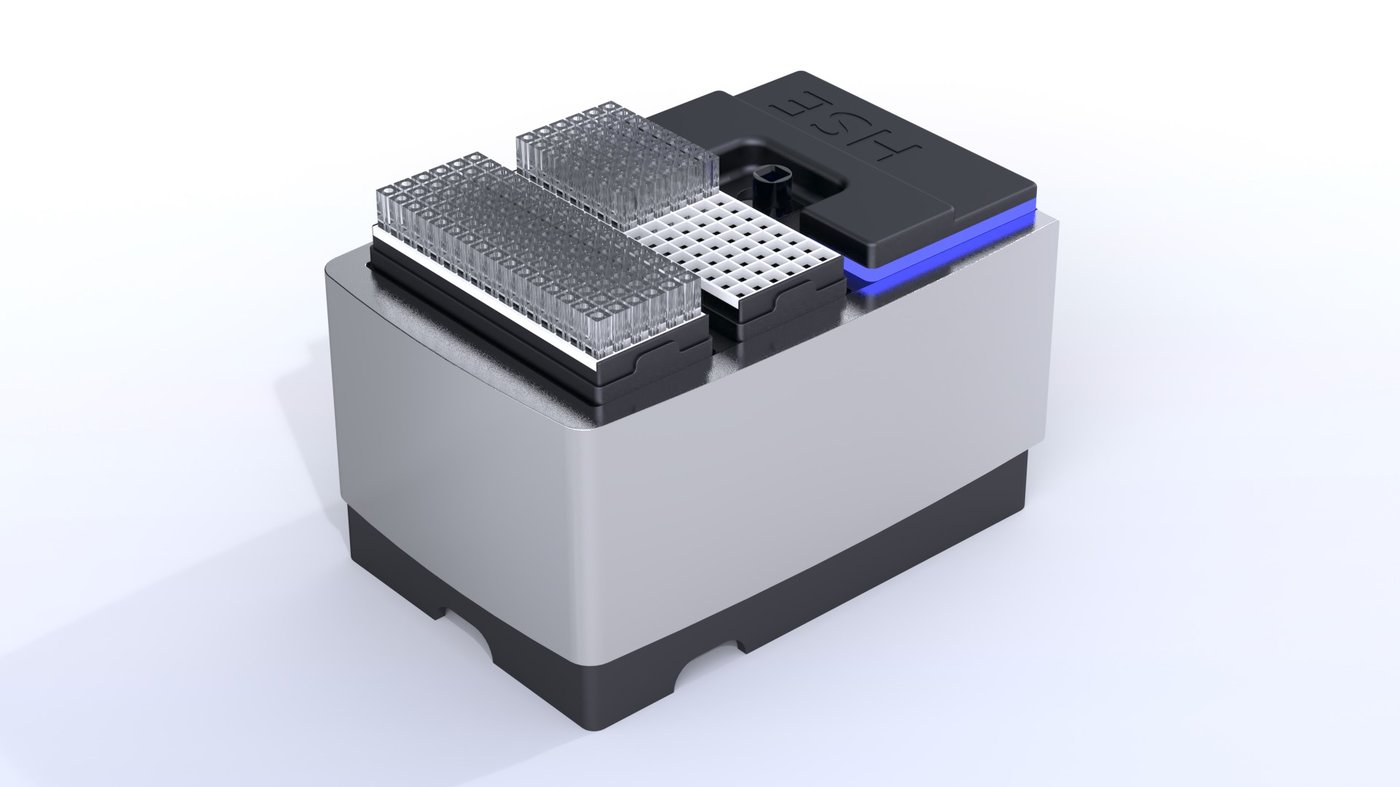OEM component measures sample quality directly in PCR and NGS applications

Posted by:
Konstantin Lutze
Published on:
Jul 7, 2023
With eviDense UV, we provide manufacturers of PCR and NGS solutions with an OEM component that allows them to integrate the measurement of concentration and purity of nucleic acid samples directly into their liquid handling workflows. The compact module requires only one microplate location, can analyze 4 wavelengths and consumes no sample material.
The quality of the samples is a decisive criterion for any nucleic acid analysis. Only if the concentration and purity are reliably determined can PCR or NGS applications deliver reliable results.
Until now, this required an intermediate pre-analytical step. Either the samples were measured individually in a spectrometer or aliquots were transferred to plates and these were then read out in an external device. This intermediate step costs time and leads to a loss of the often scarce sample material.
OEM component with little space consumption
After our engineers and scientists encountered this interruption in the automation process in many customer projects, we worked with our innovation team, the Innovation Guild, to illuminate the gaps in the processes of various manufacturers. Based on this analysis, we have now developed a module that eliminates this intermediate step and is compatible with virtually all liquid handling systems. It also does not consume valuable samples.
Manufacturers can integrate the module, named after the cleverly nectar-sucking hummingbird, directly into their liquid handling workflows as an original equipment manufacturer (OEM) component. It requires only one microplate position (MTP) and, with an overall height of less than 100 mm, is compatible with almost all pipetting robot travel heights.
Four wavelengths for accurate baselines
Concentration and quality determinations are made using highly reliable UV spectroscopy, which is well established in the industry. The measuring module on the MTP can analyze a total of four wavelengths: 260 nm (nucleic acid maximum), 280 nm (protein maximum), 230 (organic impurities) and 340 nm (other light-absorbing substances). From the combination of the four measured values, specific and thus also extremely reliable baselines can be calculated for each application.
Clever cuvette insert prevents sample loss
The samples are measured in the actual heart of the components, the UV-capable COC cuvettes (cycloolefin copolymer). With their rectangular geometry, they not only provide a reliable optical path in the measuring chamber. They also serve as transport containers between the sample and the measuring unit. For this purpose, they can simply be attached to the pipette tip of a liquid handler. Thanks to a well thought-out process, no contamination of the samples can occur during this step and they can either be pipetted back into the sample vessel or used directly in the further process. Thus, no valuable sample material is lost.
Minimal costs and systems for integration testing
Over all, costs are also kept to a minimum. Instead of a full-blown external measuring device, only one optimized module is required, and the cuvettes, as the only consumable material, are extremely small in size and correspondingly environmentally friendly. In the OEM model, HSE has both the module and the cuvettes produced and supplies them to the manufacturer in ready-to-use units.
Interested OEM customers can now see for themselves exactly how eviDense UV can improve their processes. Starting in September, we will provide them with ready-to-use modules, including cuvettes, to test integration into their own workflow.
Contact us if you would like to learn more about the possibilities of eviDense UV.
Already launched innovation products prove the added value
Innovations that give a manufacturer decisive market advantages are a specialty of HSE•AG: For Hamilton Robotics, we developed a novel fluorescence measurement module from the initial idea to production readiness. The FluorEye enables the liquid handling specialist to create targeted application added value for its customers.
In our latest annual report, you can read in detail how HSE•AG creates innovations for customers.
FluorEye has now been successfully established in the marketplace.
Learn more on their product page.
About the author
Konstantin Lutze has more than 25 years of experience in the development of laboratory automation and in vitro diagnostic systems. Before becoming CTO of HSE•AG, the electrical engineer was VP Instrument Development at QIAGEN, where he was responsible for the successful development and market launch of a next-generation sequencing platform, among other things. As CTO, he is now responsible for technology management and drives the innovations in the field of analytics of nucleic acids, proteins and cells with which HSE•AG enables its customers to achieve decisive added value.
